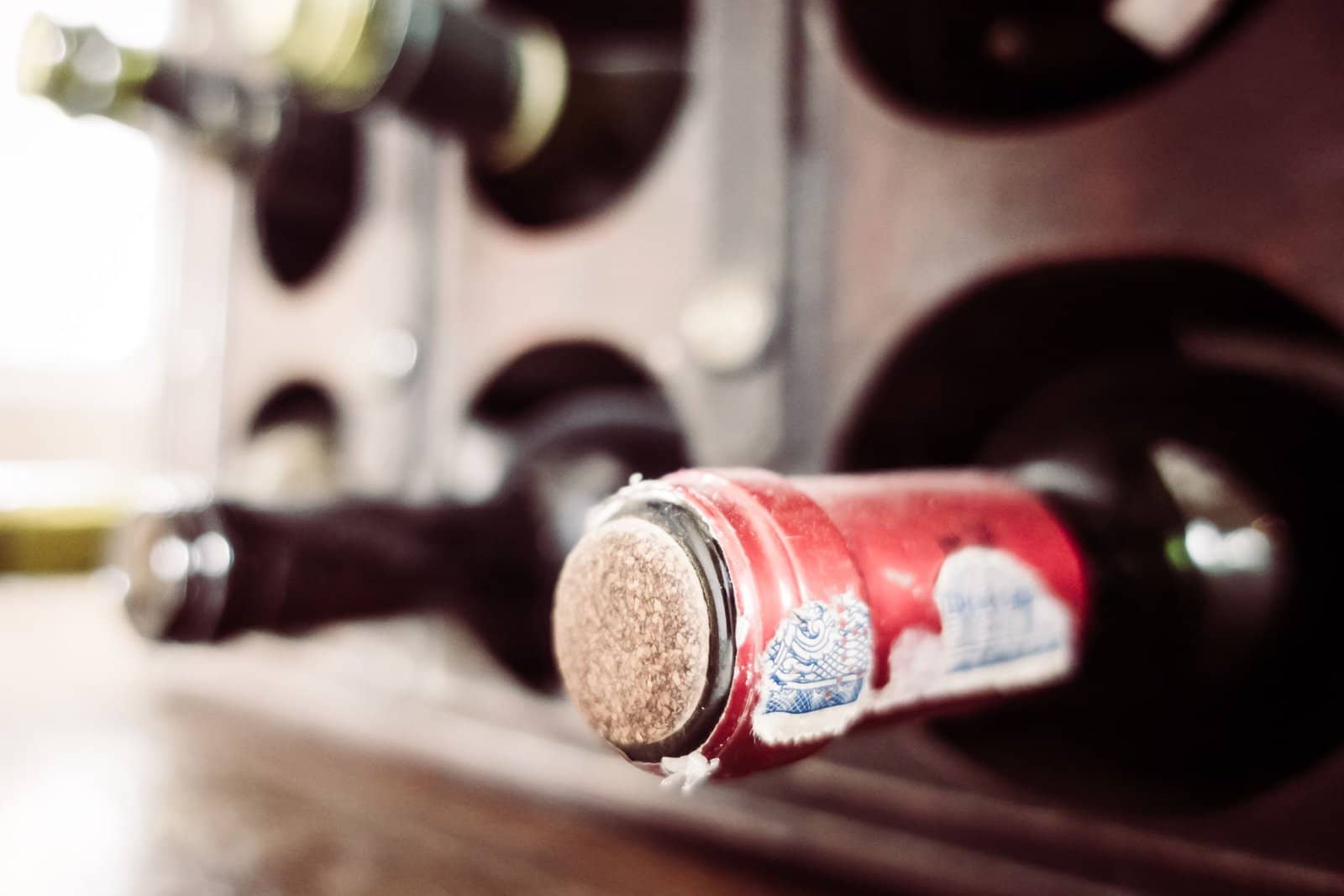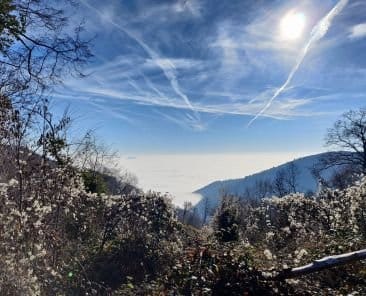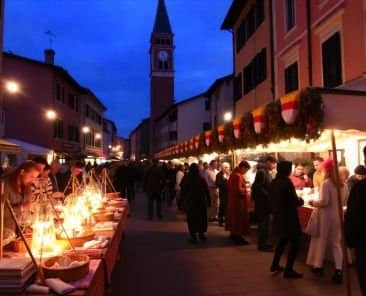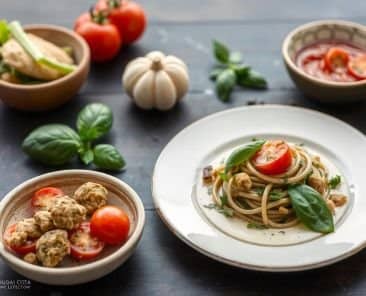Veneto is renowned globally for its rich and diverse wine production. Bordered by Friuli, Emilia-Romagna, Lombardy, and Trentino, the region is home to the high Dolomites, the quiet expanse of Lake Garda, and the beautiful hills that give rise to Prosecco.
With its 25% share of Italy’s total wine production, it is the most productive wine area in the country. To put this in perspective, Veneto’s annual wine production exceeds that of nations like Portugal and Germany and is around half that of the United States.
[picture –Prosecco]
The region’s reputation has expanded in the global wine market, with several wine varieties even earning international recognition. Valpolicella, for example, is well-known for its rich red wines, especially the esteemed Amarone Della Valpolicella.
Sparkling Prosecco is renowned for its bright acidity and freshness, especially when the wine comes from the Valdobbiadene hills.
The powerful Carmenere-Merlot and Soave is a well-known white wine produced from Garganega grapes.
[picture – Amarone Della Valpolicella]
[picture – Soave]
The unique climatic conditions and topography of Veneto contribute to its capacity to produce an extensive range of high-quality wines. Every sub-region has something special to offer, from the crisp, aromatic wines of the Dolomites’ mountainous range to the full-bodied reds of Lake Garda’s warmer, Mediterranean-like environment.
The remarkable wine heritage of Veneto is largely attributed to this geographic and climatic diversity.
A Glimpse Into the History
The history of Veneto’s vineyards is strongly related to resilience and rejuvenation. The phylloxera pandemic that took over Europe in the late 1800s presented a dire threat to the area. This microscopic bug, which resembled aphids, attacked grapevine roots, causing extensive damage to vineyards.
However, even with its long history of viticulture, Veneto was not immune to this disaster. The vineyards that had flourished for centuries were left barren, and the future of Veneto’s wine industry appeared dire.
[picture – phylloxera pandemic]
The Venetian winemakers’ spirit remained unbreakable. They started a labour-intensive process of innovation and restoration. To counteract the threat of phylloxera, the European grapevine was successfully grafted onto resistant American rootstocks. This method preserved the current grape varieties and introduced new, resilient strains that could withstand future threats.
[picture – European grapevine was successfully grafted onto resistant American rootstocks]
Today, Veneto’s prominence in the global wine industry can be traced back to this period of recovery and renewal. Overcoming such a difficult challenge and coming out stronger has solidified Veneto’s place as the world’s top wine-producing area.
The region continues to produce wines of exceptional quality that have captured the attention of wine connoisseurs worldwide. Every bottle of Veneto wine, from the elegant Prosecco to the rich reds of Valpolicella, comes with its own history and victory.
3 Veneto Key Wine Areas
- Valpolicella
Valpolicella is located near the beautiful Lake Garda, one of the most famous winemaking regions globally. This region is especially well-known for its red wines, which include the opulent Amarone della Valpolicella and the highly regarded Valpolicella Superiore.
Valpolicella, impressively, managed to escape most of the destruction brought forth by the 19th-century phylloxera pandemic. The area is renowned for producing wines with powerful structures, rich flavours, and complexity. The unique microclimate, influenced by the nearby lake, contributes to the distinctive quality of its wines.
- Valdobbiadene
Situated in the foothills of the Alps, Valdobbiadene is known for making the best Prosecco. The quality of the sparkling wines from this region is largely attributed to its high altitudes and steep vines.
[picture – Prosecco]
The high altitude of the Valdobbiadene hills enhances Prosecco’s signature acidity and freshness. The grapes produce a vivid and crisp profile that is highly desired in sparkling wine production because of the steep slopes and lower temperatures that delay the ripening process.
- Soave
The mediaeval city of Verona is surrounded by undulating hills, which is where Soave is situated. This area is primarily recognised for its superb white wines made from the native Garganega grape.
[picture – White Soave Wines]
Soave winemakers are committed to limiting yields to guarantee the best grape quality. Wines produced with this strict method are widely appreciated for their depth and elegance. Soave wines are a favourite among lovers of white wine because of their usual brilliant acidity, delicate flavours, and flowery smells.
5 Notable Vintners to Visit
1. Maculan
Location: Via Castelletto, 3, 36042 Breganze VI
Type of Wine: Specialises in white wines, red wines, and sweet wines.
Description: Maculan, a winery in Breganze, is known for its high-quality wines, including the rich and aromatic dessert wine Torcolato and exceptional Cabernet Sauvignon and Merlot. Visitors can enjoy tastings and tours, a unique experience that transmits the passion and craftsmanship behind each bottle.
2. Piovene Porto Godi
Location: Via Villa, 14, 36021 Toara di Villaga VI
Type of Wine: Known for red wines, particularly Tai Rosso, and white wines.
Description: Situated in Toara di Villaga, Piovene Porto Godi is a beautiful family-run winery producing wine since the 16th century. It is especially well-known for its Tai wine. While exploring the old cellars and vineyards, visitors can partake in a variety of tastings that showcase the estate’s extensive history and varied offerings.
3. Bisol
Location: Via Follo, 33, 31049 Valdobbiadene TV, Italy
Type of Wine: Specialises in Prosecco, particularly Prosecco Superiore DOCG.
Description: Located in the centre of the Valdobbiadene area, Bisol is a well-regarded producer of Prosecco. The Bisol family has been making sparkling wines since 1542 and has a long history of excellence in this field. The stunning vineyards and state-of-the-art winery facilities are open for tours, allowing guests to see how these fine sparkling wines are made.
4. Allegrini
Location: Villa della Torre, Via della Torre, 25, 37022 Fumane VR
Type of Wine: Known for Amarone, Valpolicella, and Recioto.
Description: The popular Allegrini winery is located in the centre of the Valpolicella area. It is well-known for its superb Amarone della Valpolicella, which blends conventional and contemporary processes to create high-quality wines. Visitors can explore the vineyards and participate in tastings that highlight the estate’s signature wines.
5. Masi
Location: Gargagnago di Valpolicella, Via Monteleone, 26, 37015 Sant’Ambrogio di Valpolicella VR
Type of Wine: Specializes in Amarone, Valpolicella, and other Veneto wines.
Description: Masi, a renowned Veneto winemaking brand, is known for its Amarone and other fine Triveneto wines, using the appassimento technique. With a rich history dating back to the 18th century, visitors to Masi can tour the estate, learn about the winemaking process, and taste their diverse range of wines, including Campofiorin and Costasera Amarone.
Highlighted Wines from Veneto
Veneto’s wine repertoire offers something for every palate. Here are some of the most renowned wines from the area, each with its own distinct aromas and characteristics.
Pinot Grigio
Known for its vivid greenish-straw colour and unique floral and citrus overtones, Pinot Grigio has a crisp, smooth palate with a subtle acidity and scents of pineapple, peach, and green apple. It goes well with seafood spaghetti or as an apéritif.
[Pinot Grigio]
Pinot Bianco
Pinot Bianco is a versatile white wine grape cultivated in Veneto, Friuli-Venezia Giulia, and Alto Adige regions. Its light to medium-bodied wines have crisp acidity, flavours like green apple, pear, and citrus, and are appreciated for their refreshing quality and food-friendly nature. This grape has a storied history in Italy and is appreciated for its refreshing quality and food-friendly nature.
Pinot Nero
Pinot Nero, also known as Pinot Noir, is a red wine grape cultivated in Italy’s Veneto, Lombardy, and Trentino-Alto Adige regions. It is known for its complex flavours, silky tannins, bright acidity, and flavours of raspberry, strawberry, and a touch of spice. Each region has its own unique terroir, making it a favourite among wine enthusiasts for its versatility and depth, often paired with poultry, pasta, and soft cheeses.
Soave
A white wine made from 100% Garganega grapes, Soave is known for its refreshing and complex flavours. It tastes like white peach, almond flower, and lemon zest and goes well with creamy seafood risottos or shellfish.
[picture – Soave]
Valdobbiadene Cartizze
Known for its refinement and minerality, this Prosecco hails from the prestigious Valdobbiadene hills. Its standout feature is its zesty citrus finish and aromas of summer pear and white flowers. It’s perfect for savouring with light appetisers or toasting on special occasions.
[picture – Valdobbiadene Cartizze]
Prosecco Rose
A sparkling rosé distinguished by its delicate bubbles and vivid pink colour. With its silky texture, crisp acidity, and peach and pomegranate flavours, Prosecco Rose pairs well with fish dishes and makes a joyful appetiser.
[picture – Prosecco Rose]
Amarone
One of the most esteemed wines of Veneto, Amarone is a powerful and strongly textured red wine. It has notes of dark chocolate, spices, and dried fruits and is full-bodied, rich, and complex. The ideal food to pair Amarone della Valpolicella with is heavy meat dishes like game, stews, or roast beef.
[picture – Amarone]
Lugana
Lugana is a white wine produced in the area surrounding Lake Garda, primarily from the Turbiana grape. The region’s unique clay and limestone soils contribute to its crisp acidity, vibrant citrus flavours, and subtle floral notes. Lugana can be enjoyed young for its fresh, zesty profile or aged to develop richer, finer characteristics.
Tai
Tai, formerly Tocai Friulano, is a white wine grape grown in Veneto, known for its delicate bouquet of white flowers, almonds, and herbs. Its wines are dry, moderately acidic, and have flavours of apple, pear, almond, and a hint of herbs. Tai is a part of Veneto’s winemaking tradition and is often paired with local dishes such as risotto and seafood.
Food Pairings
The food scene in Veneto is as rich and varied as the region’s wine history, with plenty of regional specialities that go well with each other. Here are some ideal food and wine pairings that showcase the best of Veneto’s gastronomic and viticultural offerings.
Starter
Baccalà Mantecato paired with Soave
This creamy, whipped salted cod dish, a Venetian classic, is perfectly complemented by the crisp and refreshing Soave. The acidity of the wine counteracts the Baccalà’s thick texture, bringing out the flavours and making for a delicious first course.
[picture – Baccalà Mantecato paired with Soave]
Main Courses
Risotto all’Amarone
This is an opulent recipe in which cooking the Amarone della Valpolicella imparts rich, powerful flavours to the rice. The experience is enhanced when paired with a glass of the same Amarone since the richness of the wine goes well with the flavourful, wine-infused risotto.
[picture – Risotto all’Amarone paired with Amarone]
Risi e Bisi
Rice and peas are a classic springtime dish that goes well with both red and white wines. A crisp Pinot Grigio can bring out the delicate flavours of the peas, while a light Valpolicella can lift the meal with its subtle tannins and fresh fruitiness.
[picture – Risi e Bisi paired with Pinot Grigio or Valpolicella]
Polenta e Schie
A traditional Venetian dish with tiny shrimp (schie) on top of creamy Polenta. A light red wine like Bardolino, with its bright acidity and subtle tannins, balances the shellfish’s sweetness and enhances the Polenta’s smooth texture.
[picture – Polenta e Schie paired with Bardolino]
Dessert
Frittole paired with Recioto
A glass of Recioto pairs well with Frittole, which are sweet fritters made with pine nuts and raisins. This sweet red wine complements the flavours of the Frittole and offers a well-balanced and gratifying finale to the dish with its rich, raisin-like overtones and sweet finish.
[picture – Frittole paired with Recioto]
Whether appetiser, entrée, or dessert, every meal pairs well with the suitable Veneto wine.
Conclusion
Veneto is an unmatched leader in the wine industry due to its favourable terrain, extensive history, and determined people who has preserved the process of wine-production throughout the years. In this region, you’ll find a type of wine for every palette, from the powerful reds of Valpolicella and the elegantly shimmering Prosecco to the sparkling whites of Soave. Wines are unusual and highly valued due to their unique geographical features, innovative viticultural practices, and dedication to quality.
In other words, Veneto is the dreamland for all wine enthusiasts and travellers alike who look forward to discovering outstanding wines and exploring the area’s culture during their trip.
Further Reading and Resources
For those eager to explore the rich world of Veneto’s wines and tourism opportunities, here are some valuable resources.
This site offers comprehensive information on Veneto’s wine regions, notable wines, and grape varieties.
The official site provides detailed insights into Valpolicella wines, including Amarone, with resources for wine tourism and events.
Explore the scenic wine route of Valpolicella, including maps, itineraries, and winery information.
An essential resource for anyone interested in Italian wines, including Veneto. It provides details on events, exhibitions, and wine education.
FAQs About Veneto’s Wines
- What wines is Veneto known for?
Veneto is renowned for several world-famous wines, including Valpolicella (particularly known for the luxurious Amarone della Valpolicella), Prosecco, Soave, Bardolino, and Pinot Grigio.
- What grapes are grown in Veneto?
Both red and white grapes are grown in the Veneto. Corvina, Rondinella, Molinara, Merlot, Cabernet Sauvignon, and Carmenere are the most popular red grape varieties, while Garganega, Glera (for Prosecco), Pinot Grigio, and Trebbiano are some famous white grapes.
- What makes Veneto’s wines distinctive?
Veneto’s wines are unique due to their geographical diversity, resilience, innovation, quality control, and unique grape varieties. The region’s landscapes and use of native and international grape varieties create a diverse range of wines.
- What is the best time to visit Veneto for wine tourism?
Veneto’s best wine tourism season is from late August to October, offering first-hand winemaking experiences, harvest festivals, and vibrant autumn landscapes. Spring (April to June) is also a great time to visit, offering relaxed vineyard tours and tastings due to pleasant weather and fewer crowds.
Was this helpful?
Good job! Please give your positive feedback
How could we improve this post? Please Help us.


















